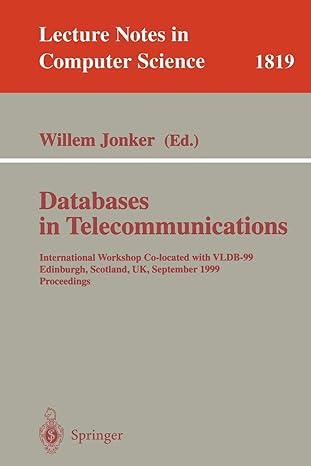Question
Consider a single processor system supporting two running processes, A and B, with the following sequential execution patterns: A: [CPU 8 ms; IO 1 ms;
Consider a single processor system supporting two running processes, A and B, with the following sequential execution patterns:
A: [CPU 8 ms; IO 1 ms; CPU 8 ms; IO 1 ms; CPU 8 ms]
B: [CPU 2 ms; IO 1 ms; CPU 2 ms; IO 1 ms; CPU 2 ms]
Assume that IO operations do not interfere with each other and are blocking, and that scheduling, and context switch times are negligible.
1. What is the total elapsed time for the two processes to run to completion?
2. Assume the system runs a non-preemptive scheduler where processes are scheduled in the order in which they become runnable, and that B takes priority over A in the event of a tie. Give the combined execution pattern of the two processes in the format as in question #3, and determine the total elapsed time for the two processes to run to completion.
3. Repeat #2 with a pre-emptive scheduler operating with a time slice of 4 ms.
4. What are the costs and the benefits of a pre-emptive over a non-preemptive scheduler for this workload, which would you choose, and why?
Step by Step Solution
There are 3 Steps involved in it
Step: 1

Get Instant Access to Expert-Tailored Solutions
See step-by-step solutions with expert insights and AI powered tools for academic success
Step: 2

Step: 3

Ace Your Homework with AI
Get the answers you need in no time with our AI-driven, step-by-step assistance
Get Started


